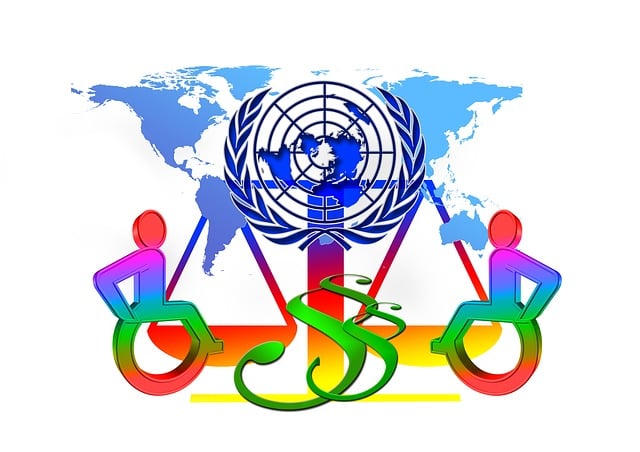Protecting Injury Victim Rights: Free Legal Advice for Justice

Injury victim rights are essential for achieving justice and fair compensation. Understanding these…….
In a world where accidents, intentional harm, and unforeseen circumstances can lead to significant injuries, the rights of victims play a pivotal role in ensuring justice, compensation, and support. This article delves into the intricate realm of injury victim rights, exploring their global impact, economic implications, technological enhancements, and the challenges they face. By understanding these aspects, we can appreciate the crucial role these rights play in shaping legal landscapes, fostering societal healing, and driving positive change.
Injury victim rights refer to a network of legal protections, support systems, and entitlements available to individuals who have suffered physical or emotional harm due to another party’s actions or negligence. This complex field encompasses various components, including compensation for medical expenses, lost wages, pain and suffering, and the right to seek justice through legal processes. As victims navigate their journey towards recovery, these rights serve as a cornerstone of protection and empowerment.
In its essence, injury victim rights are a set of legal and ethical principles designed to safeguard the interests of individuals who have become victims of accidents or crimes. These rights encompass several key components:
Medical Care and Treatment: Victims have the right to access quality medical services, including emergency care, hospitalization, rehabilitation, and ongoing treatment for their injuries. This ensures that victims receive the necessary support to heal physically and emotionally.
Compensation for Losses: This includes financial compensation for various types of losses suffered by the victim. Such losses may include:
Legal Protection and Justice: Victims have the right to seek legal redress, file lawsuits, and hold accountable the parties responsible for their harm. This includes protection from retaliation and the right to participate in criminal justice processes when applicable.
Support Services: Access to psychological counseling, rehabilitation programs, and other support services is crucial for victims’ emotional well-being and successful reintegration into society.
Historically, injury victim rights have evolved over centuries, with legal systems gradually recognizing the need to protect individuals who suffer harm due to others’ actions. Ancient Roman and Common Law principles laid the foundation for modern tort law, which now governs many aspects of injury victim rights. The concept of compensatory damages, for instance, dates back to these early legal systems, ensuring that victims could recover their losses from the wrongdoers.
Injury victim rights hold universal importance, yet their implementation varies significantly across different countries and regions. This global variability is influenced by cultural norms, economic development, and legal traditions.
North America and Europe: These regions generally have well-established legal frameworks protecting injury victims’ rights. For instance, the United States has robust tort law, while many European countries have comprehensive social safety nets, ensuring victims receive medical care and compensation.
Asia Pacific: The approach varies widely in this region. Some countries, like Japan, have a strong tradition of compensating victims for pain and suffering. In contrast, others may focus more on criminal justice, with less emphasis on civil liabilities.
Middle East and Africa: Legal systems in these regions often emphasize criminal justice over compensation, but there are varying degrees of protection. Some countries are implementing reforms to enhance victim rights, recognizing the need for a balanced approach.
Increase in Personal Injury Claims: Historically, personal injury claims have been on the rise globally, reflecting growing awareness of victims’ rights and changing societal attitudes towards accountability.
Digitalization of Legal Processes: The digital age has transformed how injury victim rights are exercised. Online platforms provide legal resources, enabling victims to access information and support more easily.
Focus on Preventive Measures: Many countries are prioritizing injury prevention as a means to reduce the number of victims and the associated costs, leading to more proactive policies.
Injury victim rights have profound economic implications, influencing both individual circumstances and broader economic systems.
Insurance Sector: Injury claims significantly impact insurance markets, affecting premiums and coverage. Insurers assess risk based on geographical locations, occupations, and personal behaviors, which can influence victims’ financial burdens.
Healthcare Costs: Medical expenses for injury treatment represent a substantial portion of healthcare spending in many countries. Effective victim rights policies can encourage efficient healthcare delivery, reducing overall costs.
Personal Injury Lawsuits: High-value personal injury cases can attract significant legal fees and settlements. This attracts investors looking for opportunities in the legal process, potentially inflating costs for victims.
Insurance Investments: Insurance companies invest a portion of their funds in various sectors, including healthcare, technology, and legal services, shaping economic growth and development.
Social Safety Nets: Countries with robust social safety nets often have more comprehensive victim support systems, reducing the financial burden on victims during recovery.
Economic Impact on Victims: For low-income individuals or families, injury-related expenses can push them into poverty. Effective rights protection ensures that victims can access necessary resources without facing economic hardship.
Technology plays a transformative role in the realm of injury victim rights, offering innovative solutions and improving support systems.
Telemedicine: Remote medical consultations enable victims to access specialized care, especially in underserved regions, enhancing accessibility to healthcare services.
Health Monitoring Apps: These apps allow victims to track their recovery progress, record symptoms, and communicate with healthcare providers, promoting proactive patient engagement.
Online Legal Databases: Victims can now access legal information, case precedents, and resources through user-friendly online platforms, empowering them to make informed decisions.
Legal Document Automation: Software tools streamline the process of creating legal documents, such as personal injury claims forms, making it faster and less resource-intensive for victims and their attorneys.
Risk Assessment: Artificial Intelligence (AI) algorithms can analyze vast amounts of data to predict potential risks, enabling proactive measures to prevent injuries.
Personalized Support: AI-driven systems can offer personalized support to victims based on their specific needs, providing tailored resources for recovery and rehabilitation.
Injury victim rights are governed by a complex web of policies, regulations, and legislative frameworks that vary across jurisdictions.
Tort Law: This legal framework provides a foundation for personal injury claims, defining liability and compensation for harm caused by negligence or intentional acts.
Workers’ Compensation Acts: These laws ensure that employees who suffer work-related injuries receive medical benefits and wage replacement during recovery.
Motor Vehicle Liability Insurance: Required in many countries, this insurance protects drivers and victims of motor vehicle accidents, providing compensation for injuries and property damage.
Legal Tradition: Common Law jurisdictions tend to have more detailed personal injury laws compared to civil law systems, which may focus on fault-based liability.
Political and Social Values: Societal attitudes towards individual rights, responsibility, and compensation influence the strength of victim protection policies.
Economic Considerations: As discussed earlier, economic factors play a significant role in shaping legal policies, impacting victims’ access to justice and compensation.
Despite significant progress, injury victim rights face various challenges and criticisms that hinder their effectiveness. Addressing these issues is crucial for ensuring a fair and just system.
Access to Justice: Low-income victims may face barriers in accessing legal representation due to high costs, creating disparities in compensation outcomes.
Complex Legal Processes: Navigating legal systems can be daunting for many victims, leading to delays and insufficient compensation.
Underreporting and Underdocumentation: Certain types of injuries, especially those involving emotional distress, may go unreported or undokumented, resulting in inadequate data and resources for support services.
Criticism: One common criticism is that personal injury claims encourage “slush fund” litigation, where plaintiffs seek excessive settlements.
Lack of Standardization: Variations in legal policies across regions lead to inconsistencies in victim protection.
Insufficient Data: Gaps in data collection hinder evidence-based policymaking and resource allocation.
Studying successful applications of injury victim rights provides valuable insights into effective policies and practices.
Sweden has established an exemplary system that ensures victims receive holistic support, including medical care, counseling, and financial compensation. Key features include:
Lesson: Comprehensive, multi-faceted approaches, combining healthcare, legal, and social support services, can lead to better outcomes for victims.
The US has experienced significant tort reform efforts in recent decades, aiming to control rising litigation costs. These reforms include:
Outcome: While these reforms aimed to reduce costs, they also raised concerns about limiting victims’ access to justice and compensation. The debate continues, highlighting the delicate balance between protecting rights and managing legal costs.
The field of injury victim rights is poised for growth and transformation, driven by technological advancements, shifting societal attitudes, and evolving legal landscapes.
Digitalization of Legal Services: Further integration of technology will streamline legal processes, making them more efficient and accessible, especially in remote areas.
AI-Driven Support Systems: Artificial intelligence can enhance victim support by offering personalized resources, improving risk assessment, and facilitating communication between victims and service providers.
Prevention and Education: Increasing focus on injury prevention through public awareness campaigns and educational initiatives will reduce the need for victim compensation in the long term.
Green Injury Law: With growing environmental concerns, there is a rising interest in addressing injuries caused by environmental hazards, leading to new legal frameworks and policies.
Global Harm Prevention: International collaborations are emerging to address global challenges, such as road safety and workplace hazards, fostering a more unified approach to victim protection.
Policy Harmonization: Standardizing policies across regions can ensure fairer treatment for victims and facilitate efficient legal processes.
Invest in Technology: Governments and legal organizations should allocate resources to develop and implement innovative technological solutions, enhancing support systems.
Community Engagement: Involving communities in shaping victim rights policies ensures that these rights reflect local needs and cultural contexts.
Injury victim rights are a cornerstone of just and compassionate societies, ensuring that individuals affected by harm receive the support and compensation they deserve. This article has explored various aspects of this complex field, from historical definitions to global trends, economic implications, technological advancements, and policy frameworks.
The challenges and criticisms faced by these rights highlight areas for improvement, but also demonstrate the resilience and adaptability of legal systems in protecting vulnerable individuals. As we look towards the future, emerging trends and strategic considerations offer promising avenues for enhancing victim support and ensuring their rights are upheld worldwide.
By understanding and addressing injury victim rights, we contribute to building more equitable and caring societies where victims can heal, recover, and rebuild with dignity and support.
Q: What is the primary purpose of injury victim rights?
A: The primary purpose is to protect and empower individuals who have suffered harm due to others’ actions or negligence, ensuring they receive just compensation and necessary support during their recovery journey.
Q: Who is covered under these rights?
A: These rights generally apply to anyone who has experienced physical or emotional injury, including employees (under workers’ compensation), motor vehicle accident victims, and individuals injured due to another person’s negligence.
Q: How do I know if I have a valid claim for injury compensation?
A: Validity depends on factors like the severity of your injuries, fault determination (if it’s not clear, consult legal experts), and adherence to local laws and statutes of limitations. Documentation is crucial; keep records of medical treatments, bills, and any communications related to your injury.
Q: Can victims receive compensation for emotional distress?
A: Yes, many jurisdictions recognize that injuries can cause significant emotional trauma. Compensation for pain and suffering covers these non-monetary damages, though quantifying them can be subjective.
Q: What if I’m facing financial difficulties due to medical expenses? Are there resources available?
A: Absolutely. Many countries have social safety nets or government programs to assist with medical costs for low-income individuals. Legal aid organizations and non-profit groups also offer support, providing guidance on navigating healthcare systems and benefits.

Injury victim rights are essential for achieving justice and fair compensation. Understanding these…….

Injury victim rights are crucial for securing justice and fair compensation after harm caused by neg…….

Medical evidence is paramount in personal injury cases, providing concrete proof of harm and its ext…….

Injury victims can navigate complex legal systems with dedicated legal assistance and advocacy, prot…….

Emotional injury, a critical yet often overlooked aspect of victimhood, significantly impacts an ind…….

Injury victim rights claims are subject to strict legal time frames or statutes of limitations (1-3…….

Injury victims of defective products have legal standing under product liability law, which grants t…….

Injury victim rights laws protect individuals harmed by negligence, offering legal avenues for compe…….

Injury victim rights are fundamental to ensuring justice and fair compensation for individuals harme…….